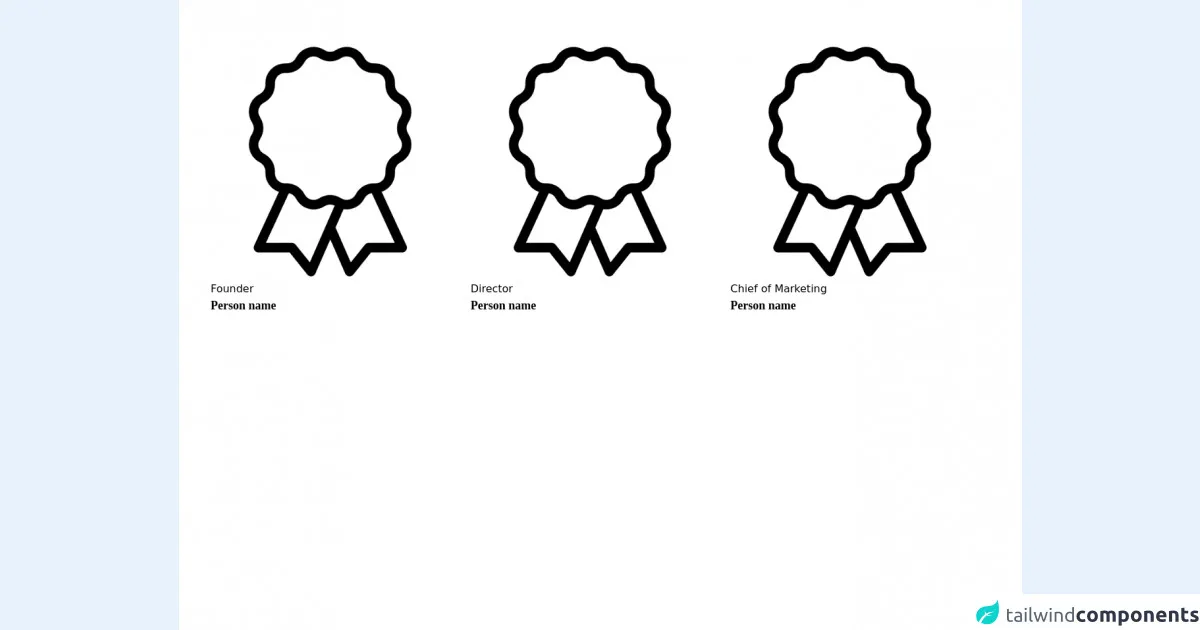- Published on
Ways To Build A Hieu With Tailwind CSS In 60 Minutes

- What is Tailwind CSS?
- The description of Hieu UI component
- Why use Tailwind CSS to create a Hieu UI component?
- The preview of Hieu UI component
- The source code of Hieu UI component
- How to create a Hieu with Tailwind CSS?
- Step 1: Set up the HTML structure
- Step 2: Style the HTML elements using Tailwind CSS classes
- Step 3: Use the Hieu UI component in your web application
- Conclusion
Tailwind CSS is a utility-first CSS framework that allows you to build custom designs without writing any CSS. It provides a set of pre-defined classes that can be used to style your HTML elements. In this article, we will explore how to build a Hieu UI component using Tailwind CSS in just 60 minutes.
What is Tailwind CSS?
Tailwind CSS is a utility-first CSS framework that provides a set of pre-defined classes to style your HTML elements. It allows you to build custom designs without writing any CSS. Tailwind CSS is easy to learn and use, and it is highly customizable.
The description of Hieu UI component
Hieu is a UI component that is commonly used in web applications. It is a card-like component that displays information about a specific item. The Hieu component typically contains an image, a title, a description, and some action buttons.
Why use Tailwind CSS to create a Hieu UI component?
Tailwind CSS provides a set of pre-defined classes that can be used to style your HTML elements. This makes it easy to create custom designs without writing any CSS. The Hieu UI component can be easily created using Tailwind CSS classes.
The preview of Hieu UI component
To create a Hieu UI component using Tailwind CSS, we will use a combination of classes to style the HTML elements. The preview of the Hieu UI component is shown below:
Free download of the Hieu's source code
The source code of Hieu UI component
To create the Hieu UI component using Tailwind CSS, we will use a combination of HTML and Tailwind CSS classes. The source code of the Hieu UI component is shown below:
<div class="relative wrap overflow-hidden p-10 h-full bg-white">
<div class="container">
<div
class="flex flex-col md:grid grid-cols-3 mx-auto p-2 text-blue-50">
<div class="flex flex-row-reverse md:contents">
<div class="bg-white col-start-1 col-end-1 pr-8 rounded-xl my-4 ml-auto">
<img class="leading-tight text-justify" src="https://img.icons8.com/ios/452/warranty.png">
<h3>Founder</h3>
<p class="font-bold font-serif text-lg">Person name</p>
</div>
<div class="bg-white col-start-2 col-end-2 pr-8 rounded-xl my-4 ml-auto">
<img class="leading-tight text-justify" src="https://img.icons8.com/ios/452/warranty.png">
<h3>Director</h3>
<p class="font-bold font-serif text-lg">Person name</p>
</div>
<div class="bg-white col-start-3 col-end-3 pr-8 rounded-xl my-4 ml-auto">
<img class="leading-tight text-justify" src="https://img.icons8.com/ios/452/warranty.png">
<h3>Chief of Marketing</h3>
<p class="font-bold font-serif text-lg">Person name</p>
</div>
</div>
</div>
</div>
</div>
How to create a Hieu with Tailwind CSS?
To create a Hieu UI component using Tailwind CSS, follow the steps below:
Step 1: Set up the HTML structure
The first step is to set up the HTML structure for the Hieu UI component. The HTML structure should contain an image, a title, a description, and some action buttons. The HTML structure is shown below:
<div class="bg-white rounded-lg shadow-lg overflow-hidden">
<img class="w-full h-48 object-cover" src="https://source.unsplash.com/random" alt="Hieu Image">
<div class="p-4">
<h2 class="text-lg font-bold">Hieu Title</h2>
<p class="text-gray-600 mt-2">Hieu Description</p>
<div class="mt-4">
<button class="bg-blue-500 hover:bg-blue-700 text-white font-bold py-2 px-4 rounded">
Action 1
</button>
<button class="bg-gray-500 hover:bg-gray-700 text-white font-bold py-2 px-4 rounded ml-2">
Action 2
</button>
</div>
</div>
</div>
Step 2: Style the HTML elements using Tailwind CSS classes
The next step is to style the HTML elements using Tailwind CSS classes. We will use a combination of classes to style the image, title, description, and action buttons. The Tailwind CSS classes used to style the HTML elements are shown below:
.bg-white {
background-color: #ffffff;
}
.rounded-lg {
border-radius: 0.5rem;
}
.shadow-lg {
box-shadow: 0 10px 20px rgba(0, 0, 0, 0.1);
}
.overflow-hidden {
overflow: hidden;
}
.w-full {
width: 100%;
}
.h-48 {
height: 12rem;
}
.object-cover {
object-fit: cover;
}
.p-4 {
padding: 1rem;
}
.text-lg {
font-size: 1.125rem;
line-height: 1.75rem;
}
.font-bold {
font-weight: 700;
}
.text-gray-600 {
color: #718096;
}
.mt-2 {
margin-top: 0.5rem;
}
.mt-4 {
margin-top: 1rem;
}
.bg-blue-500 {
background-color: #4299e1;
}
.hover\:bg-blue-700:hover {
background-color: #2b6cb0;
}
.text-white {
color: #ffffff;
}
.py-2 {
padding-top: 0.5rem;
padding-bottom: 0.5rem;
}
.px-4 {
padding-left: 1rem;
padding-right: 1rem;
}
.rounded {
border-radius: 0.25rem;
}
.ml-2 {
margin-left: 0.5rem;
}
.bg-gray-500 {
background-color: #a0aec0;
}
.hover\:bg-gray-700:hover {
background-color: #4a5568;
}
Step 3: Use the Hieu UI component in your web application
The final step is to use the Hieu UI component in your web application. You can simply copy the HTML and CSS code and paste it into your web application. You can also customize the Hieu UI component by modifying the Tailwind CSS classes.
Conclusion
In this article, we explored how to build a Hieu UI component using Tailwind CSS in just 60 minutes. We learned that Tailwind CSS provides a set of pre-defined classes that can be used to style your HTML elements. We also learned that the Hieu UI component can be easily created using Tailwind CSS classes. By following the steps outlined in this article, you can create your own custom Hieu UI component using Tailwind CSS.